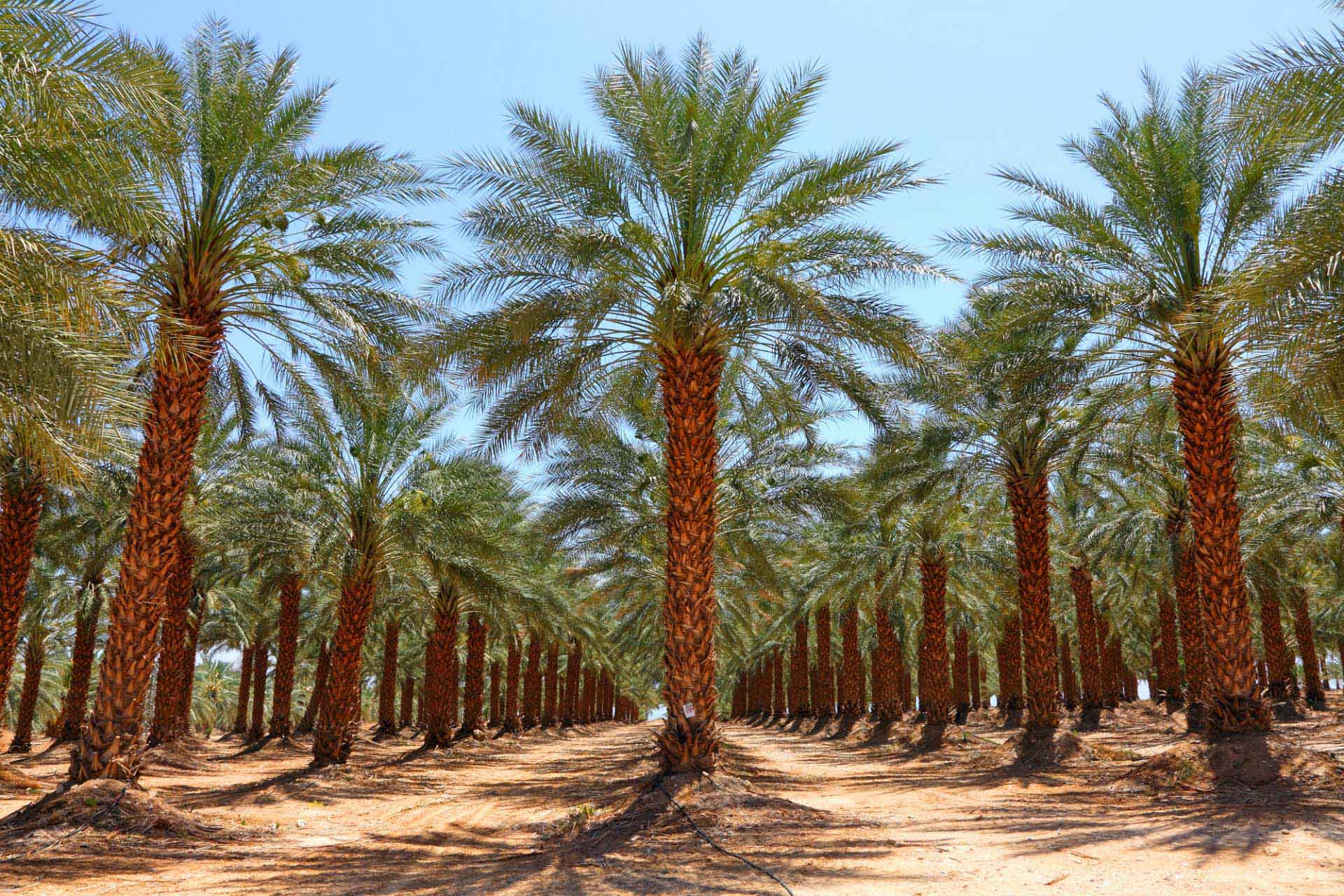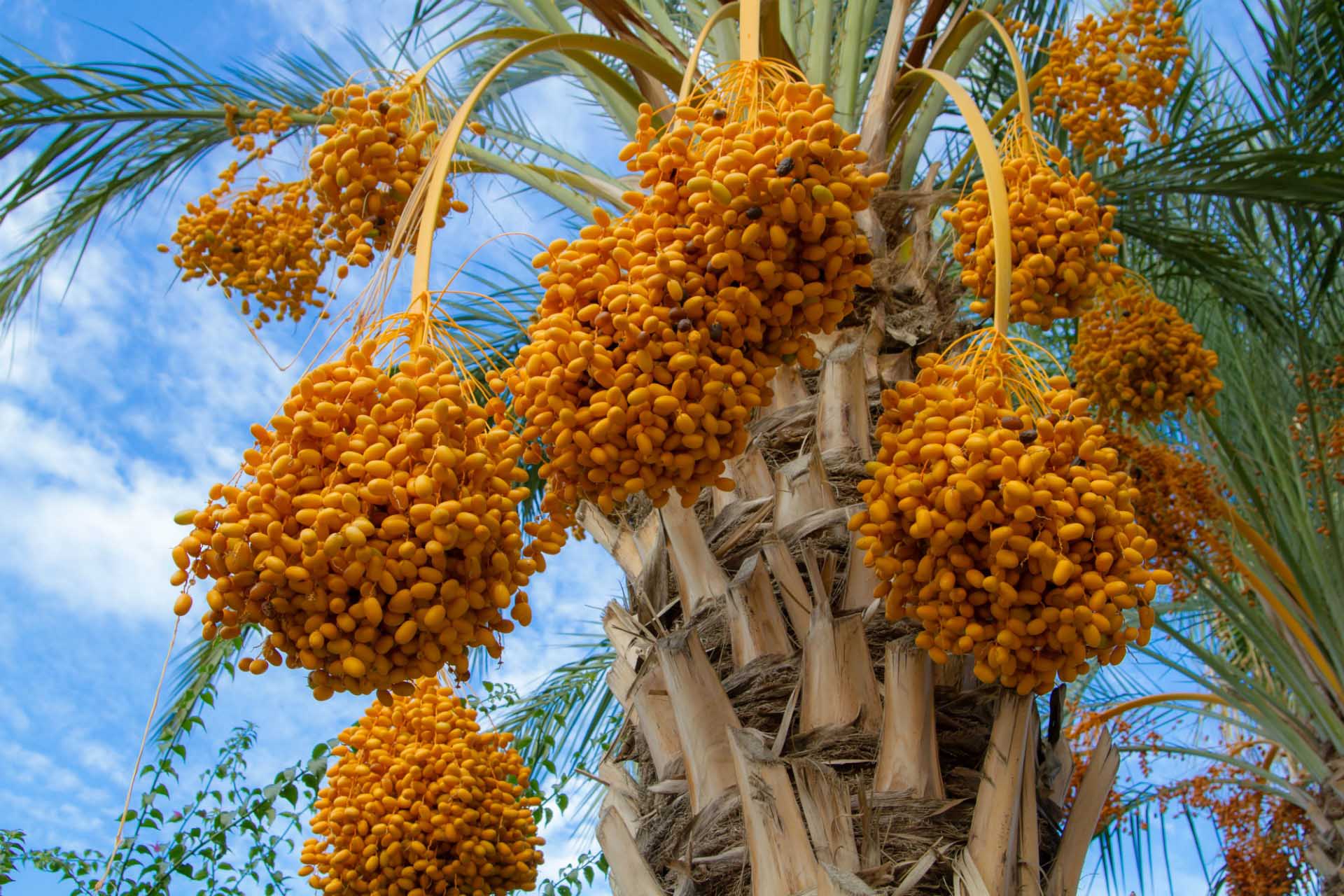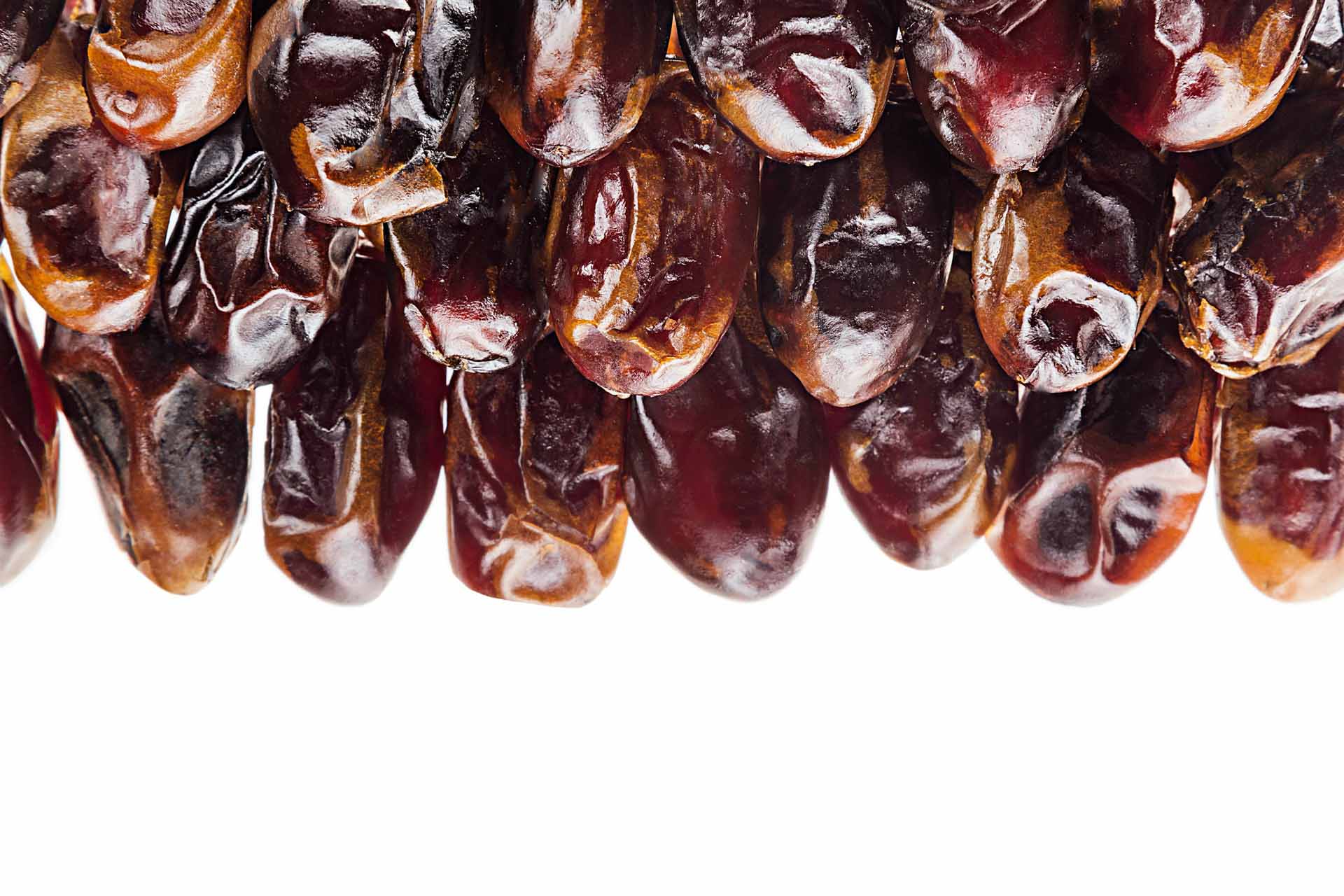Palm Trees
The date palm (botanical name phoenix dactylifera) belongs to the class Monocotyledons and the family Palm. It has provided mankind with food and building materials since the dawn of time and can be found from the Canary Islands across northern Africa to the Middle East ; from India and Pakistan to south-west Asia .
The sugar content of ripe dates is about 80%, and the remainder is a rich blend of protein, fat and mineral products including copper, sulfur, iron, magnesium and fluoric acid. Dates are therefore highly nutritious. Bedouin Arabs, who eat them on a regular basis, show an extremely low incidence rate of cancer and heart disease.
The date palm is often the only available staple food for the inhabitants of desert and arid lands, and as such it is vital to millions throughout North Africa and the Middle East . According to the World Food and Agricultural Organization, there are 90 million date palms in the world and each tree can grow for more than 100 years. 64 million of these trees are grown in Arab countries, which produce 2 million tons of dates between them each year.
Date-producing Arab countries are Saudi Arabia , Algeria , Bahrain , Egypt , Iraq , Libya , Morocco , Oman , Sudan , Syria , Tunisia , the UAE, and Yemen . Between them Algeria , Egypt , Libya , Morocco , and Saudi Arabia produce 600 different kinds of dates, which accounts for 60% of the world’s production.
The date palm is also highly prized as an ornamental tree throughout the Kingdom of Saudi Arabia , as it is ideally situated in streets, avenues and driveways. Optimum planting conditions dictate that trees should be set 20-26 feet/6-8m apart and then well soaked with water. The date palm can tolerate a high salinity level of up to 22,000 parts per million.






